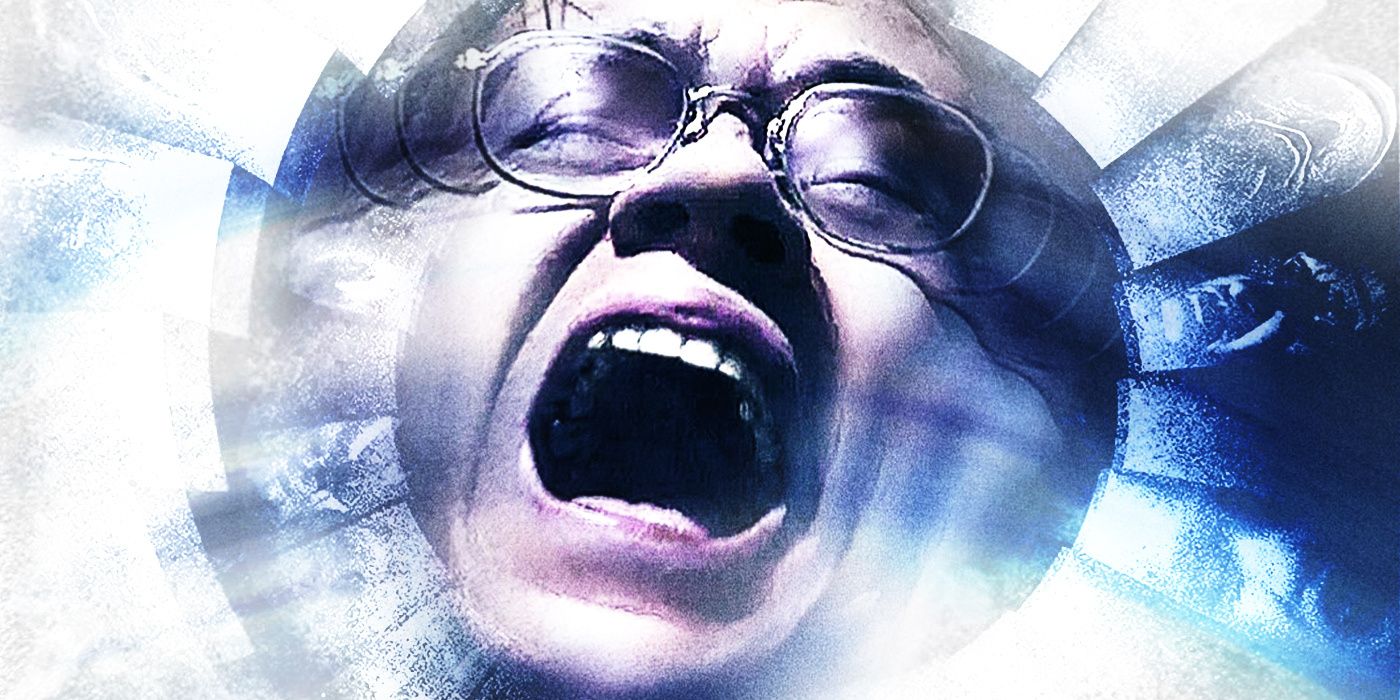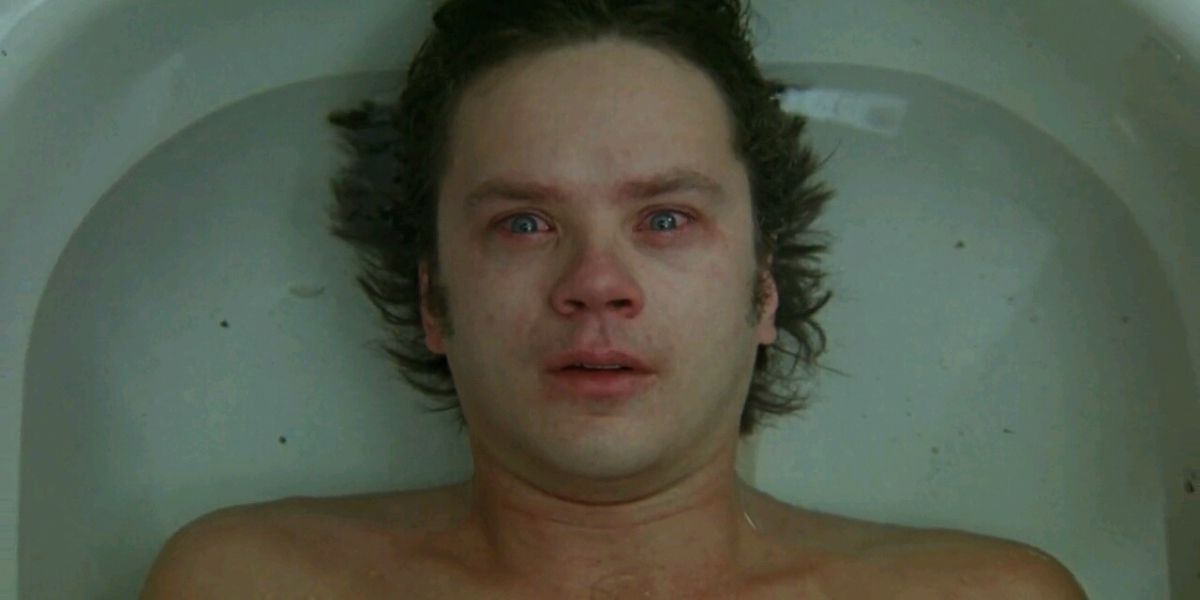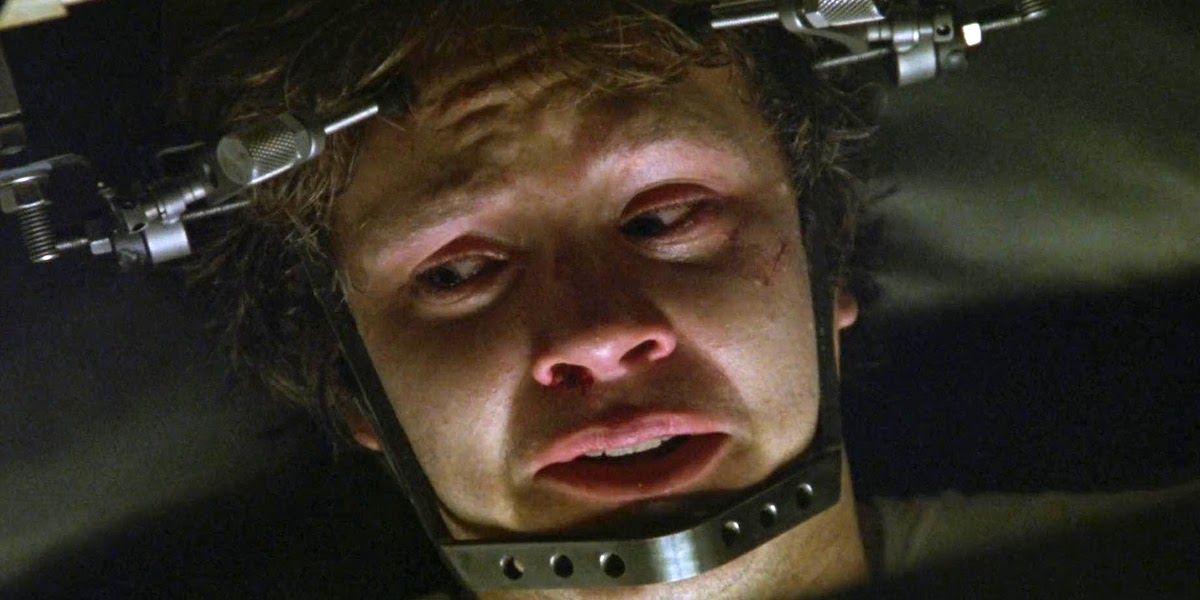Isolation is one of the most essential elements of horror. Every horror story contains it to some extent, although some take a looser definition than others. The clearest example is the simplest – a group of characters are trapped in a single location and can’t leave, be it the Antarctic in The Thing, a spaceship in Alien, or a remote island off the coast of Scotland in The Wicker Man – but isolation can be conveyed in a variety of ways. One of the greatest examples of this comes from Adrian Lyne’s 1990 cult classic Jacob’s Ladder, a film that manages to retain this fundamental aspect of horror despite taking place in the heart of New York City. The film achieves this by having our troubled protagonist Jacob Singer (Tim Robbins) being the only person who appears to notice that anything strange is happening, with everyone else blissfully carrying on with their lives like it’s just another day in paradise. It’s a trope numerous horror films have featured, and while it does an excellent job of creating tension as both the audience and the main character struggle to comprehend what is happening, Jacob’s Ladder takes it a step further to explore the difficult subject of PTSD. Jacob’s background as a Vietnam War veteran leaves him isolated from his friends who are unable to comprehend the horrors he has seen, and the film’s representation of this through a classic horror trope is nothing short of astounding. It cements Jacob’s Ladder as one of the greatest horror films of its time, and one whose power has only grown since its release.
The plot of Jacob’s Ladder is one of its greatest strengths, but also its most confusing. Four years after serving in Vietnam, Jacob begins to be haunted by a series of increasingly disturbing encounters, such as catching a glimpse of a tentacle protruding out of a homeless person on a subway train, or nearly being run over by a car driven by a gang of faceless hoodlums. While initially dismissing them as just strange occurrences, he eventually decides to visit his regular practitioner Doctor Carlson, only to discover the hospital has no record of such a person ever existing. Thus begins a psychotic trip into the world of conspiracies and nightmares, one populated by skeptical friends and shady government officials who dismiss Jacob’s visions as mere shadows in the dark. The few people who are sympathetic to Jacob’s plight leave the film almost as quickly as they enter, leaving Jacob utterly alone in his attempts to figure out what is happening. While the film does eventually provide an answer to its plethora of questions, Lyne is more than happy to dance around the mystery until it’s time to roll the credits on this ordeal, piling on the insanity for our unfortunate hero as he tries to salvage the frail scraps of life he has left.
As previously mentioned, the film achieves the impossible task of making someone feel alone in one of the most populated cities on Earth, a feat accomplished via two intertwined methods: by making Jacob the only person to notice that anything strange is happening, and by making him unable to properly communicate with anyone about his experiences during the Vietnam War. While either would have succeeded in segregating Jacob from the surrounding world, it's the combination of the two that elevates the film beyond being just another horror film. The closeness with which they are connected makes it impossible to discuss one without the other, but for the purpose of cohesiveness we’ll take them in order.
The aforementioned subway scene is the best place to start. Not only is it one of the most perfectly executed sequences of surrealistic filmmaking this side of the Mystery Man scene from Lost Highway, but it also embodies the crippling sense of loneliness that torments Jacob throughout the film. After experiencing yet another Vietnam flashback that thrusts him back into the real world with the force of a carbine rifle, Jacob wanders the compartments of a New York subway train that looks like it’s one day away from being discontinued. He asks another passenger if they’ve passed Bergen Street, but after receiving a response so silent it gives the vacuum of space a run for its money, he sits himself on one of the many decrepit seats until the next stop. As he leaves he catches a glimpse of…something…hidden beneath the folds of a homeless person’s coat. Just a trick of the light, or something else? Unfortunately (or fortunately) the train has already gone before he can have another look, leaving Jacob to stare after it uncertainly as it disappears from view. After arriving at the exit he finds it chained and bolted shut, giving the impression of a station that was abandoned years ago. Jacob begins to make his way across the tracks to the other exit, but such a simple task proves easier said than done. Lights flicker. Rats scuttle. Suddenly the silence of this subterranean junkyard is interrupted when another train charges its way through the darkness, almost killing Jacob in the process. Its horde of faceless passengers stare at him as though catching one last glimpse of humanity before departing for the depths of hell forever. And then, in the blink of an eye, they’re gone. Jacob stares in disbelief while the darkness reclaims its dominance, breathes a sigh of relief that would rival anything he felt in Vietnam, then continues his trek to the exit.
The scene lasts a total of five minutes, during which time Lyne displays a mastery of the horror genre that would make John Carpenter jealous. From the way he shoots the interior of the train as though capturing it through the distorted and eerie lense of a dream, to the evocate soundscape of dripping water and electrical sparks where Jacob’s footsteps echo as though stretching all the way through time, the sequence can proudly stand as one of the most unsettling moments in the genre. But the scene is not just an excuse for Lyne to show off his obvious talents, but also acts as the foundation from which the rest of the film is built. Isolation radiates from every shot, and while much of this is conveyed rather literally (from the opening shot of Jacob waking up in an otherwise empty compartment, to then being trapped in an otherwise empty station), it also establishes the more figurative definition of the term too. The sole person he tries to interact with looks straight through him as though he’s not there, and when Jacob later confides all of this to his girlfriend Jezzie (Elizabeth Peña) she casually dismisses it like this is just a regular occurrence in New York. This feeling of ostracism drives an immediate wedge between Jacob and the rest of the world, only exacerbating the paranoia as his thin grip on reality begins to crumble.
But this technique does more than just amplify the already disturbing horror, but also serves as the linchpin from which Lyne can explore the film’s central thesis: how war continues to torment those who have experienced it long after it has ended. The film opens with a traumatic flashback to Jacob’s time in Vietnam that sees many of his comrades being killed in a surprise attack, a suitably unnerving scene that he will return to many times throughout the film. These flashbacks persist with such regularity he spends more time haunted by the past than living in the present, ensuring there is always a thin sheet of glass between him and anyone he tries to get close to. The war may have ended four years ago, but it’s clear that he has never truly left that battlefield, turning even the mundanity of normal life into his own personal horror story.
One of the few characters who can relate to his suffering is Paul (Pruitt Taylor Vince), a fellow Vietnam War veteran who confides that he has also been experiencing similar visions. While it feels like he’s only just entered the film before he’s violently yanked away when his car explodes (a freak accident, or something more?), his presence highlights one of the core tenets of the film. In the turbulent nightmare of trauma and hysteria that Jacob has spent the past four years engulfed in, the only person who is able to offer anything other than hollow words is someone who’s spent the past four years suffering through the exact same issue, a tragic image that illustrates just how horrific warfare is. The representation of this through a series of surrealistic images they can’t articulate speaks to just how complicated the subject is, while also reinforcing the notion that, even if someone appears to be okay from the outside, there’s no telling what inner demons they’re fighting that the rest of us are thankfully spared from.
Jacob’s Ladder may wear the trappings of a horror film, but in reality it’s as much of a war film as Platoon or The Thin Red Line. The only difference is that Jacob’s Ladder puts the focus on the aftermath of war and how it continues to affect those involved long after the guns have stopped firing, becoming an uncomfortable but important examination into the power of PTSD and how veterans are treated once they return home. The best horror films are ones that elevate themselves beyond just shocking their audience, instead using their platform to explore controversial topics through the smokescreen of simple entertainment. Jacob’s Ladder is one of the greatest examples of this. It’s a horror film about a subject that far too many people have had to experience first-hand, a thought that makes the final product even more terrifying.



